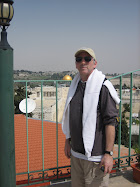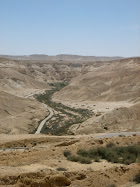Quote of the Week 419 - Listend/Hearing for Non-material Sustenance
Quote of the Week 419 - Listening/Hearing for Non-material Sustenance
Every one who is thirsty, come and drink. He who has no money, come, buy and eat. Come, buy wine and milk without money and without price. Why do you spend your money for that which is not bread and your labor for that which does not satisfy? Listen carefully to Me, and eat what is good. Let your soul delight in abundance. Incline your ear, and come to Me. Hear, that your soul will live…
--Isaiah 55:1-3, The Living Torah translation by Rabbi Aryeh Kaplan
Meditation (Click your selection, scroll down to view it)
- Audio Link: Interview - You Cannot Avoid Mystery; Eastern Meditation
- Audio Link: A Foundation for a Fruitful Meditation Practice: Science of Breath/Pranayama/Relaxation - Theory and Practice
- Audio Link: (Scroll to 11/04/18 entry) The Breath and Life Force; Guided Meditation - I Am an Empty Shell, Therefore I Am Full, etc.
- Meditation Basics - Expanded Version
- Meditation Basics - Condensed Version
- Mantra Meditation Basics
- Nada Meditation - Anahata/The Unstruck Sound
- Jewish Yoga Meditation
- Hebrew Mantras
- Hebrew Mantras, Part Two
- Hebrew Mantras, Part Three
- Hebrew Mantras - Adonai Hineni
- Healing Meditation: Ruach El Shaddai/Breath of Balance
- Meditating, Eating and Sleeping
- Shortcuts to Spiritual Development?
- Audio Link: Guided Meditation - I Am and Empty Shell, Therefore I Am Full; A Meditation on Emptiness and Dark Luminescence Based on the Opening Lines of Genesis
- Guided Meditation: The Stage
- Guided Meditation: I Am an Empty Shell, Therefore I Am Full; A Meditation on Emptiness and Dark Luminescence Based on the Opening Lines of Genesis
- Guided Meditation: The Rod, The Staff, and The Star
- Torah-Veda Meditation Class Site
- Interspiritual Contemplative Group
CURRENT TEACHING SESSIONS
Friday, December 19, 2008
Shechinah: Rise of the Feminine
Or, Eve and the Serpent Revisited
By Steven J. Gold
One continuing criticism of traditional Judaism has been the dominance of male images and authority throughout its many varied aspects. Of course, over the past several decades, there have been significant inroads moving towards a more egalitarian approach, with a growing recognition of Bat Mitzvah, women rabbis, cantors and teachers, and changes in liturgy to reflect female involvement and energy. Even within certain sectors of mystical Judaism, there is a growing recognition of the lop-sided male domination of the past and an anticipation of an upcoming rising of the Female aspect.
Eastern spiritual traditions, such as Yoga, Hinduism, Buddhism and Taoism, have generally been more balanced in depicting the essential equilibrium between masculine and feminine energies and depictions, such as the Yin-Yang of Taoism, and the depictions of both male and female energies in the gods and goddesses prevalent in Hinduism and Buddhism. Judaism includes portrayals of some significant feminine figures, such as the Matriarchs, Tamar, Miriam, Deborah, Ruth and Esther, but they are relatively few and far between. “El Shaddai” is a designation of The One contained in the Torah whose meaning includes the aspect of balanced nurturance, providing the right amount of energy to create and sustain life as we know it. It shares the same root as the Hebrew word for breasts, signifying the feminine nature to this suckling nurturance. The noun, “Torah” itself is feminine in gender, and has a curiously close phonetic relation to “Tara”, a designation of the Divine Feminine in both Hinduism and Buddhism. On the spiritual/mystic side of things, there is the extraordinary Song of Songs, an erotic, ecstatic, poetic celebration of the Divine Feminine shunned by traditionalists and embraced by mystics; the concept of the glorious Sabbath Queen; and references, without much elucidation or elaboration, to the Shechinah, the aspect of the Divine Feminine.
So what about this Shechinah, the female aspect of the Divine, meant to dwell among us mortals to provide guidance and inspiration, as is related to have occurred during the existence of the Ark of the Covenant? Let us begin at the beginning, with the infamous incident concerning an apple, a snake, and the first woman.
The traditional theology in both Judaism and Christianity portrays the incident involving the serpent in the Garden of Eden as humankind’s first sin and accompanying fall from grace, for which we have been suffering and seeking salvation ever since. However, viewing this incident and subsequent events in the Bible through the eyes of yogic and Jewish mysticism can yield a very different interpretation, and cast a much different light on our infamous “snake in the grass”.
The motif of encountering in some form or fashion a snake, serpent or dragon can be found in myth and lore transcending time, place and culture, as it is a powerful archetypal figure that resonates deep within. The biblical Hebrew term for this serpent in the Book of Genesis is “nachash”. This is a reference to that same power known in yoga as kundalini/serpent power. Both mystical yoga and Judaism warn against trifling with such a power without proper preparation and great caution, as it is the most subtle, but greatest, power of all manifestation, from which the rest of manifest life emanates. The snake was left to slither at the lowest level of earthly life because it represents the primordial power that animates all of life, including life at it lowest forms.
“Kundalini” and “Schechinah” both contain within their meanings the idea of a “dwelling” or “abode” for this feminine aspect of Divinity. And they both function to assist with individual spiritual development and as a medium to commune with The One. Mystical Judaism informs us that it was this “Shechinah” power that dwelled in the Ark of the Covenant, with whom Moses and the High Priests after him communed; the same power depicted in the movie, Raiders of the Lost Ark, which so graphically portrayed its ability to annihilate forces of evil. The connection between this “Shechinah” aspect and the snake aspect is illustrated by the fact that the Hebrew consonants for “Shechinah” are phonetically similar to the Hebrew consonants for the snake, “nachash”, reversed.
The true function performed by the serpent in the Garden of Eden was to act as an agent of The One to complete the task of bringing manifest life as we know it into being, by causing primordial, prototypical, androgynous Man/Woman to be propelled out of the Garden into the life of manifestation and duality, retaining both the “good” knowledge to remember that all emanates from The One, and the “evil” inclination to forget that and become lost in a sense of separation, the primary root of all evil.
Skipping ahead to the Book of Exodus, we find the figure of Pharaoh representing the ultimate expression of the worldly power of the evil “dark” side of kundalini gone astray. Pharaoh represents the height of a sense of separation, deified as the Be-All-and-End-All god on earth, represented by none other than the same serpent embodied in his headdress. Moses’ first encounter with Pharaoh was to illustrate, not only to Pharaoh, but to the people he had come to liberate, that this ultimate of earthly power of manifestation was not to be deified, but rather to be used as our support to praise and do the work of The One from which it emanated. This power was embodied for Moses not as an ornate headdress as with Pharaoh, but rather served as a simple staff/walking stick, broken off from the Tree of Life, depicting it as a tool useful for his ability to function in the world. By no coincidence, the Hebrew word for the snake that emanated from Moses’ staff is none other than “nachash” the same term designated for the snake in the Garden of Eden. “Thy rod and thy staff, they comfort me.” It is indeed tricky to take the snake by the tail, as Moses did, and convert it back into a walking stick, but that is what is necessary to achieve the mastery of life which leads to the ability to become the perfect humble servant to the Originator of Life. And thus, to master life is the same as to master service. True mastery does not lead to an arrogant display of triumphant majesty, as with Pharaoh, but rather to an acknowledgement of an Awesomeness beyond earthly comprehension, and thus to humble service, as with Moses. And to this, we owe a great debt of gratitude to the Shechinah, the Divine Mother, without whom Nothing would be the only possibility.
Bio
Steven J. Gold is author of the book, Yoga and Judaism (sub-titled Om Shalom: Explorations of a Jewish Yogi) available at http:/stores.lulu.com/yajc, and at major online retailers. Author’s blog: http://yajcenter.blogspot.com.




























No comments:
Post a Comment